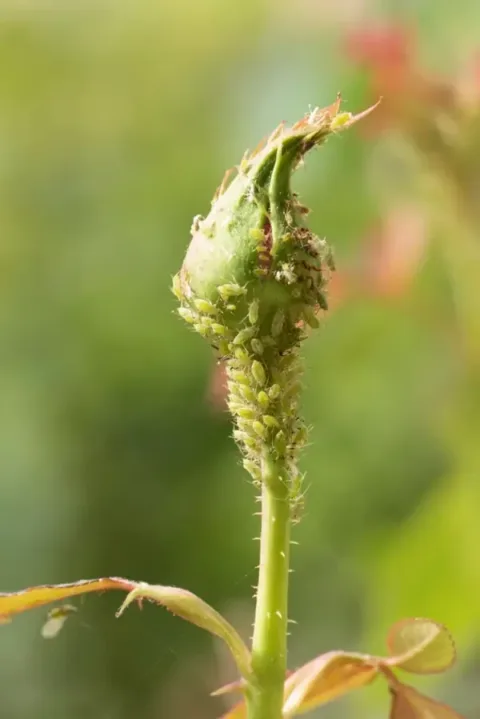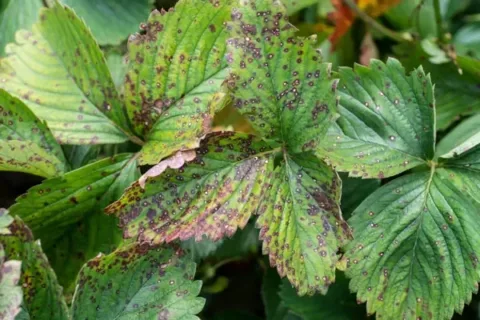 Become a Landscape Detective: Your Guide to Spotting Pests and Diseases Now!
Become a Landscape Detective: Your Guide to Spotting Pests and Diseases Now!
Welcome, fellow garden enthusiasts! As the vibrant energy of late spring blossoms into the lushness of summer here in Knoxville, our gardens are bursting with life. But along with the beauty, this active growth period can also bring unwanted visitors: pests and diseases. Fear not! Becoming a keen observer of your landscape is the first and most crucial step in maintaining a healthy and thriving outdoor space. Think of yourself as a landscape detective – noticing clues and acting early can save your precious plants from significant damage. Let’s learn how to put on our detective hats and scout for trouble!
Why Scout? An Ounce of Prevention…
You might be thinking, “Do I really need to go searching for problems?” The answer is a resounding YES! Regular scouting offers several key benefits:
- Early Detection: Catching issues in their early stages means easier and more effective treatment. A small aphid infestation is much simpler to manage than a widespread colony.
- Preventative Action: Identifying conditions that could lead to problems (like poor drainage encouraging fungal growth) allows you to take preventative steps.
- Targeted Treatment: Knowing exactly what you’re dealing with ensures you use the right solution, avoiding unnecessary treatments that could harm beneficial insects or the environment.
- Peace of Mind: Regularly checking your plants helps you stay connected to your garden and enjoy its beauty without the worry of unseen issues.
Your Detective Toolkit: Keep it Simple!
You don’t need fancy gadgets to become a successful landscape detective. Here are a few essential tools:
- Your Eyes: The most important tool! Train yourself to really look at your plants.
- Your Hands: Gently touch leaves and stems to feel for stickiness, unusual textures, or the presence of small creatures.
- A Small Hand Lens or Magnifying Glass: Helpful for getting a closer look at tiny pests or disease symptoms.
- Gloves: Protect your hands while you’re investigating.
- A Notebook and Pen (or your phone): To jot down observations and take pictures.
- A Pruning Shears: For collecting samples of affected plant parts (place them in a sealed plastic bag).
Where to Look: Hotspots for Trouble
Pests and diseases often have their favorite hiding spots. Pay close attention to these areas:
- Undersides of Leaves: Many insects, like aphids and spider mites, like to congregate here.
- New Growth: Young, tender leaves and shoots are often targeted by sucking insects.
- Stems and Branches: Look for unusual bumps, holes, or discoloration.
- The Base of the Plant: Check for signs of soil-borne diseases or pests that attack roots and lower stems.
- Areas with Poor Air Circulation: Dense foliage can trap moisture, creating ideal conditions for fungal diseases.
What to Look For: Recognizing the Clues (Late Spring into Summer Focus)
As we transition from late spring into the warmer days of summer in Knoxville, be particularly vigilant for these common signs:
Pest Clues:
- Holes or Chewed Leaves: Irregular holes, skeletonized leaves (only veins remaining), or notches along the edges can indicate caterpillars, beetles, or slugs/snails.
- Yellowing or Stippling of Leaves: Sucking insects like aphids, spider mites, and leafhoppers feed on plant sap, causing yellow spots or a fine, speckled appearance. Look closely for tiny insects on the undersides of leaves. You might also notice a sticky substance called “honeydew” left behind by aphids.
- Sticky Residue (Honeydew): As mentioned above, this sugary substance attracts ants and can lead to the growth of sooty mold (a black, powdery fungus).
- Webs: Fine, silken webs, especially on the undersides of leaves and between branches, are a telltale sign of spider mites.
- Misshapen or Curled Leaves: Aphids and other sucking insects can inject toxins that cause leaves to distort and curl.
- Visible Insects: Keep an eye out for any unusual insects crawling on your plants. Learn to identify common garden pests in our region (we’ll have more resources on this soon!).
Disease Clues:
- Leaf Spots: These can vary in color (yellow, brown, black), size, and shape. Look for spots with concentric rings or a fuzzy growth.
- Wilting or Drooping: This can be a sign of root rot (often caused by overwatering) or vascular diseases that block water flow. Check the soil moisture and the base of the stem.
- Powdery Mildew: A white, powdery coating on leaves and stems, often appearing in humid conditions.
- Rust: Orange or reddish-brown powdery spots, usually on the undersides of leaves.
- Dieback: The progressive death of stems or branches, often starting at the tips.
- Unusual Growths: Look for galls (abnormal swellings on stems or leaves) or fungal fruiting bodies.
 Your Scouting Routine: Make it a Habit!
Your Scouting Routine: Make it a Habit!
Aim to spend at least 10-15 minutes a few times a week walking through your garden and closely observing your plants. Make it a relaxing ritual!
- Be Systematic: Start at one end of your garden and work your way through, checking all types of plants.
- Look High and Low: Examine both the upper and lower surfaces of leaves, as well as stems and the base of the plant.
- Check Different Plants: Pests and diseases can be plant-specific, so don’t assume that if one plant looks healthy, they all are.
- Observe After Rain: Wet conditions can encourage fungal diseases.
- Pay Attention to Changes: Note any changes in your plants’ appearance from one day to the next.
What to Do When You Find Something:
- Identify the Problem: Use your observations, photos, or consult reliable resources (like the experts here at Willow Ridge!) to identify the pest or disease.
- Isolate Affected Plants (If Possible): This can help prevent the spread to healthy plants.
- Take Action: Once you know what you’re dealing with, you can choose the most appropriate course of action. This might include hand-picking pests, pruning affected leaves, or using organic or chemical treatments. Always follow product instructions carefully.
- Monitor: After treatment, continue to scout regularly to ensure the problem is resolved and doesn’t return.
We’re Here to Help!
Becoming a landscape detective takes practice, but it’s a rewarding skill that will help you cultivate a beautiful and healthy garden. If you spot something unusual and you’re not sure what it is, don’t hesitate to bring a sample (in a sealed bag) or clear photos to Willow Ridge Garden Center. Our knowledgeable team is always happy to help you identify the issue and recommend the best course of action for your Knoxville landscape.
Happy scouting, and happy gardening! We look forward to seeing you at Willow Ridge soon!

